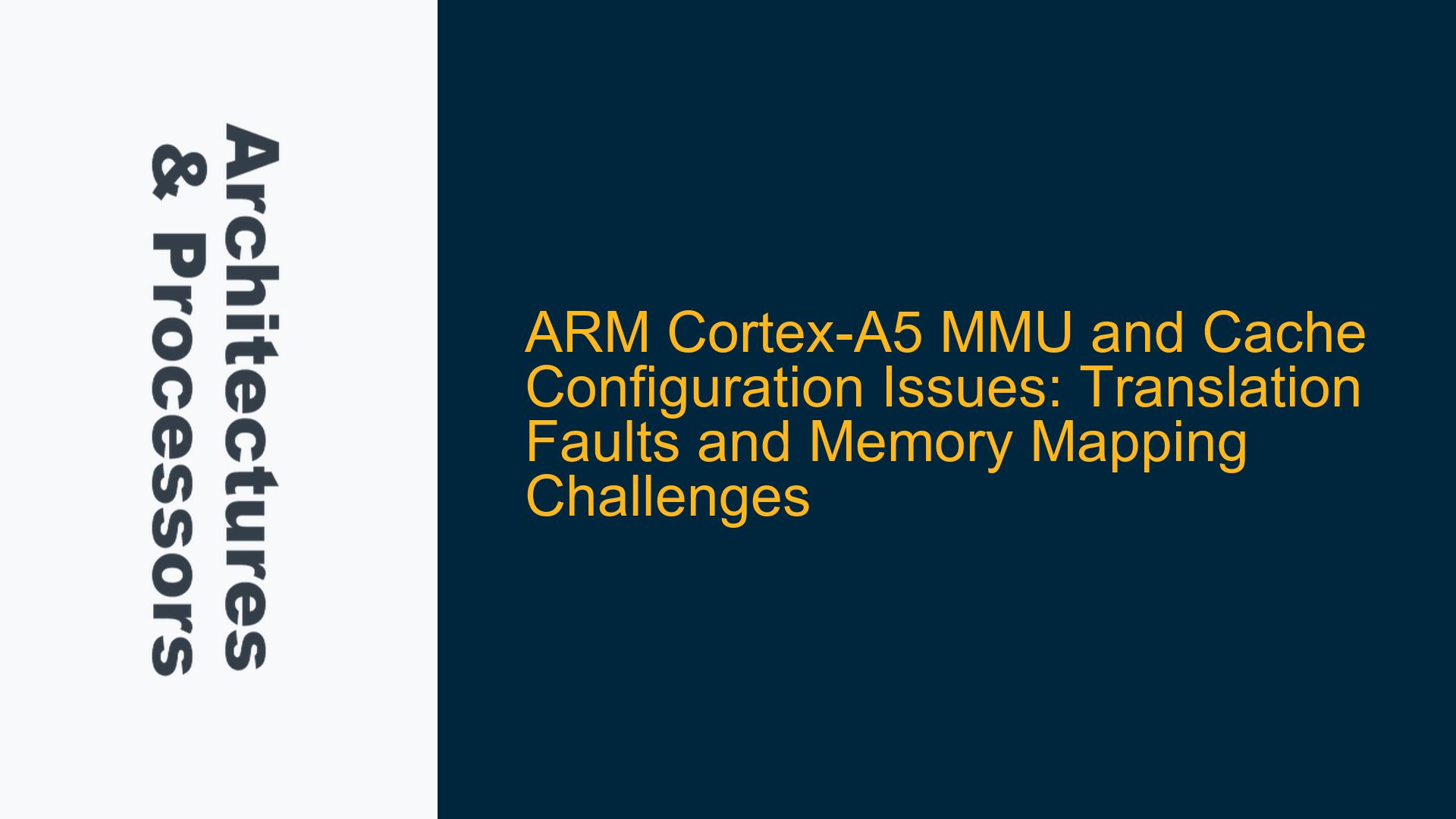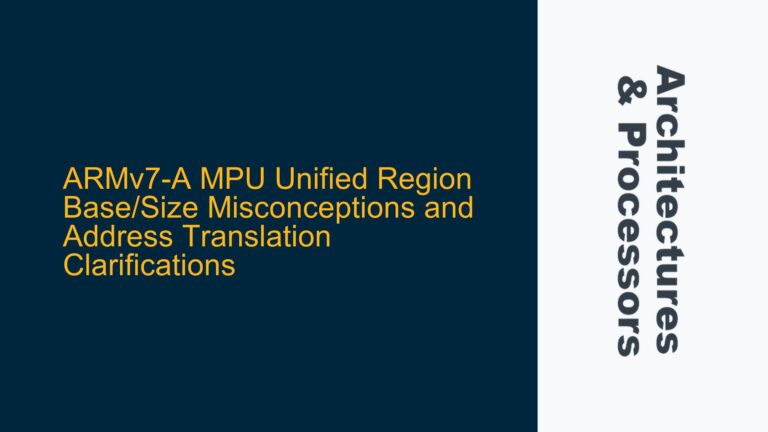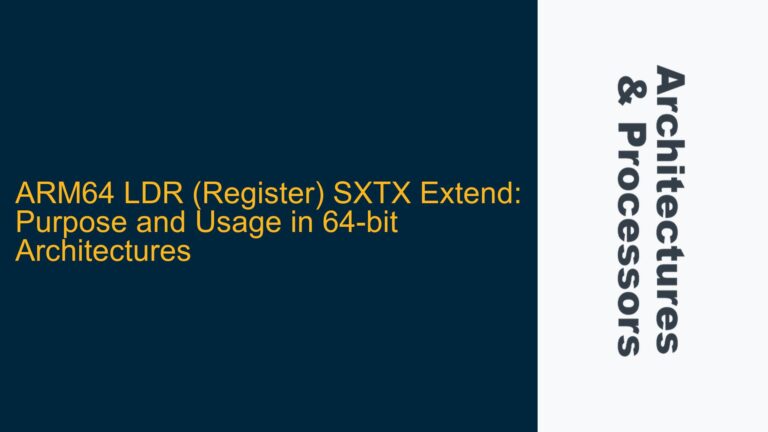ARM Cortex-A5 MMU and Cache Configuration for Performance Optimization
Enabling the Memory Management Unit (MMU) and cache on an ARM Cortex-A5 processor is a critical step for optimizing system performance. However, improper configuration can lead to translation faults, memory access issues, and suboptimal performance. This guide addresses the challenges of configuring the MMU and cache, focusing on translation table setup, memory mapping, and troubleshooting common issues such as translation faults.
Translation Table Configuration and Memory Mapping Challenges
The ARM Cortex-A5 MMU relies on translation tables to map virtual addresses (VA) to physical addresses (PA). These tables are stored in main memory (typically RAM) and define memory regions, access permissions, and cacheability attributes. A common challenge arises when configuring translation table entries for heterogeneous memory regions, such as internal RAM, internal flash, and external flash, each with different sizes and access requirements.
Key Challenges:
- Defining Translation Table Entries for Non-Uniform Memory Regions: For example, mapping a 16MB external flash using 1MB sections requires 16 entries in the Level 1 (L1) translation table. Each entry must specify the physical address, access permissions, and memory attributes.
- Handling Smaller Memory Regions: When dealing with smaller memory regions, such as 512KB SRAM blocks, using 1MB sections can lead to inefficiencies. For instance, two 512KB SRAM regions (SRAM0 and SRAM1) mapped using a single 1MB section will share the same memory attributes, which may not be desirable.
- Flat Mapping vs. Custom Mapping: Flat mapping (VA = PA) is often used during initial MMU configuration for simplicity. However, custom mappings are required for advanced use cases, such as isolating memory regions or implementing memory protection.
Example: Translation Table Setup for 1MB Sections
Consider a system with the following memory regions:
- Internal RAM: 1MB (0x3EF00000 – 0x3EFFFFFF)
- Internal Flash: 4MB (0x18000000 – 0x183FFFFF)
- External Flash: 16MB (0x20000000 – 0x20FFFFFF)
The L1 translation table entries for these regions would look like this:
| Virtual Address Range | Physical Address Range | Translation Table Entry (Example) |
|---|---|---|
| 0x00000000 – 0x000FFFFF | 0x3EF00000 – 0x3EFFFFFF | `tlb[0x000] = TTB_SECT_ADDR(0x3EF00000) |
| 0x00100000 – 0x001FFFFF | 0x18000000 – 0x180FFFFF | `tlb[0x001] = TTB_SECT_ADDR(0x18000000) |
| 0x00200000 – 0x002FFFFF | 0x18100000 – 0x181FFFFF | `tlb[0x002] = TTB_SECT_ADDR(0x18100000) |
| … | … | … |
| 0x01000000 – 0x010FFFFF | 0x20000000 – 0x200FFFFF | `tlb[0x010] = TTB_SECT_ADDR(0x20000000) |
In this example, each 1MB section is mapped individually, allowing for fine-grained control over memory attributes. However, this approach may not be suitable for smaller memory regions, such as 512KB SRAM blocks, as it forces the use of 1MB sections.
Translation Faults and Common Configuration Errors
Translation faults occur when the MMU cannot resolve a virtual address to a physical address. These faults are often caused by incorrect translation table configuration or improper MMU setup. Common causes include:
- Invalid Translation Table Entries: Each entry in the L1 translation table must have bits[1:0] set to
b10for section entries. If these bits areb00orb11, the MMU will generate a translation fault. - Misaligned Translation Tables: The L1 translation table must be aligned to a 16KB boundary. Misalignment can lead to unexpected behavior or translation faults.
- Incorrect Memory Attributes: Improperly configured memory attributes, such as cacheability or shareability, can cause data corruption or access violations.
- Unmapped Memory Regions: Attempting to access a memory region that is not mapped in the translation table will result in a translation fault.
Example: Debugging a Translation Fault
Consider a scenario where enabling the MMU results in a translation fault and memory dump errors (e.g., all ? marks). The following steps can help diagnose and resolve the issue:
-
Verify Translation Table Entries: Ensure that each entry in the L1 translation table has bits[1:0] set to
b10for section entries. For example:tlb[0x000] = TTB_SECT_ADDR(0x3EF00000) | TTB_SECT_AP_FULL_ACCESS | TTB_SECT_CACHEABLE_WB | TTB_TYPE_SECT;Here,
TTB_TYPE_SECTensures that bits[1:0] are set correctly. -
Check Translation Table Alignment: Verify that the translation table is aligned to a 16KB boundary. For example:
ALIGNED(16384) static uint32_t tlb[4096]; -
Validate Memory Attributes: Ensure that memory attributes are configured correctly for each memory region. For example, internal RAM should be marked as cacheable and write-back (WB), while external flash should be marked as cacheable and write-through (






